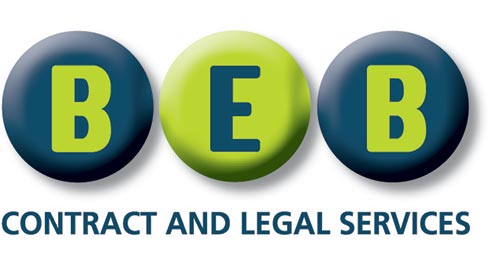For many contractors and freelancers in the UK, the topic of IR35 can be both complex and confusing. And, as with all laws relating to tax, compliance is a must. Otherwise, the result may be a heavy fine and an expensive bill for back taxes. Navigating the IR35 rules can be challenging as they are often ambiguous and difficult to understand, especially for those with limited knowledge of tax legislation. Given the potential consequences of non-compliance, it is imperative that contractors take the time to understand the difference between inside and outside IR35 to ensure they are operating within the relevant rules.
IR35 Explained
IR35 is a set of UK tax rules which seek to prevent individuals from avoiding taxes by working through their own limited company rather than being employed directly. The purpose of IR35 is to ensure workers pay the correct amount of tax and national insurance.
A brief history of the legislation
The IR35 legislation became law on 6 April 2000. In 2001, opposition to IR35 began to form, with groups such as IPSE (previously known as PCG) aiming to repeal the legislation.
Since its implementation, IR35 has undergone several controversial legislative changes, including one in 2017 when reforms were made relating to the public sector. Since 2017, public sector contractors are no longer responsible for verifying their IR35 status. Instead, the responsibility falls on the relevant public sector body that hires their services.
In 2021, similar changes were made to IR35 for private businesses. Rather than the freelancer or contractor having to determine their IR35 status, this is most of the time the client’s responsibility.
Inside IR35
What does ‘working inside IR35’ mean?
Being inside IR35 means that you are regarded as an employee for tax purposes and that you fulfil the following criteria:
- You must accept the work set by your end-client and render your services within a specific set of hours/days. In addition, your client is obliged to pay for the level of work you provide.
- Your client controls what work is done as well as how, when and where.
- You receive the same holiday pay, maternity/parental leave pay, pension and other benefits that a direct employee would receive.
- You have line management responsibilities.
- You show signs of being part of the client’s business, such as having a desk space and a company email address.
Implications for contractors inside IR35
If you are deemed to fall within IR35, you will be required to pay the same amount of tax and national insurance as a direct employee. This means you will be subject to PAYE and the correct amount of tax will be deducted from your pay each month.
Furthermore, your end-user client will be responsible for matching the national insurance contributions (NICs) paid to the government. If these contributions are paid incorrectly, both you and your client will be held liable by the authorities.
Outside IR35
What does ‘working outside IR35’ mean?
Working outside IR35 means you operate as a legitimate business and are not considered an employee of your end-user client. You will also match the following descriptions:
- You are responsible for your own success or failure.
- You take financial risks and have the opportunity to earn profits from your business.
- You accept work from multiple clients.
- You can send a substitute to provide services on your behalf.
- You provide the equipment required to perform the job.
- You must correct faulty work for no additional charge.
- You are only paid for the work you complete, regardless of the time it takes.
Advantages for contractors outside IR35
If you work outside IR35, the relevant rules will not apply to you. This means your payment and taxation arrangements with HMRC will remain the same. You will invoice the end-user client for the services you provide and then be paid accordingly for the full amount with no tax deductions.
However, this does not mean you are entirely free from tax obligations. It is still your sole responsibility to pay the correct amount of tax and national insurance on the payments you receive for your work.
Knowing Your IR35 Status
Now that you have developed a better understanding of the difference between inside and outside IR35, the next step is to ensure that your end-clients will not misconstrue your status. Verifying your IR35 status is crucial as it can help you avoid unwanted visits from HMRC, exorbitant fines and having to pay back taxes that could lead to business disruption or even bankruptcy.
How HMRC determines your IR35 status
HMRC takes several factors into consideration to ensure IR35 compliance (note: they are considered separately for each contract per client). These factors include:
- Personal service
Are you required to perform the work personally or can you hire someone to provide services on your behalf?
- Mutuality of obligation
Is your client obliged to provide you with work all of the time? Are you required to accept their job offers?
- Control
Are you free to perform the job at your own discretion? Or does the client dictate how, when and where you should carry out the work?
How to ensure you remain outside IR35
Because the IR35 rules can be ambiguous, there is a risk that end-user clients can make inaccurate status determinations. Nevertheless, there are a number of steps you can take to remain outside IR35 and ensure your client’s assessment correctly reflects your status.
- Seek a comprehensive contract review
Adopting a proactive approach to verifying your IR35 status is an effective way of ensuring compliance. You can achieve this by arranging a comprehensive contract review, which is a service we offer here at BEB. A contract review will help ensure that your contracts are IR35-friendly and worded appropriately. This can help eliminate misunderstandings and reduce the risk of your clients mistaking you for a ‘disguised’ employee.
- Challenge a client’s SDS
If a client erroneously categorises you as being inside IR35, you can submit an appeal against their Status Determination Statement (SDS). You can also provide evidence, such as the result of your contract review, to prove that your services fall outside the scope of IR35. Your client will have 45 days to take the appropriate action.
- Take the CEST test
Check Employment Status for Tax (CEST) is a government tool that helps businesses make IR35 determinations. The way in which you answer the test questions will help you verify your IR35 status.
Conclusion
IR35 compliance is an essential aspect of working as a contractor or freelancer in the UK. Failure to comply with the IR35 rules can lead to significant financial implications, such as a heavy fine and an invoice for back taxes. By understanding the difference between working inside and outside IR35 and how HMRC determines your status, you can have peace of mind knowing that you are operating within the relevant rules.
At BEB, our team of tax and employment law experts are on hand to provide you with specialist IR35 advice. Contact us today and we will review your contracts to ensure they are IR35-friendly and match your particular work conditions.

